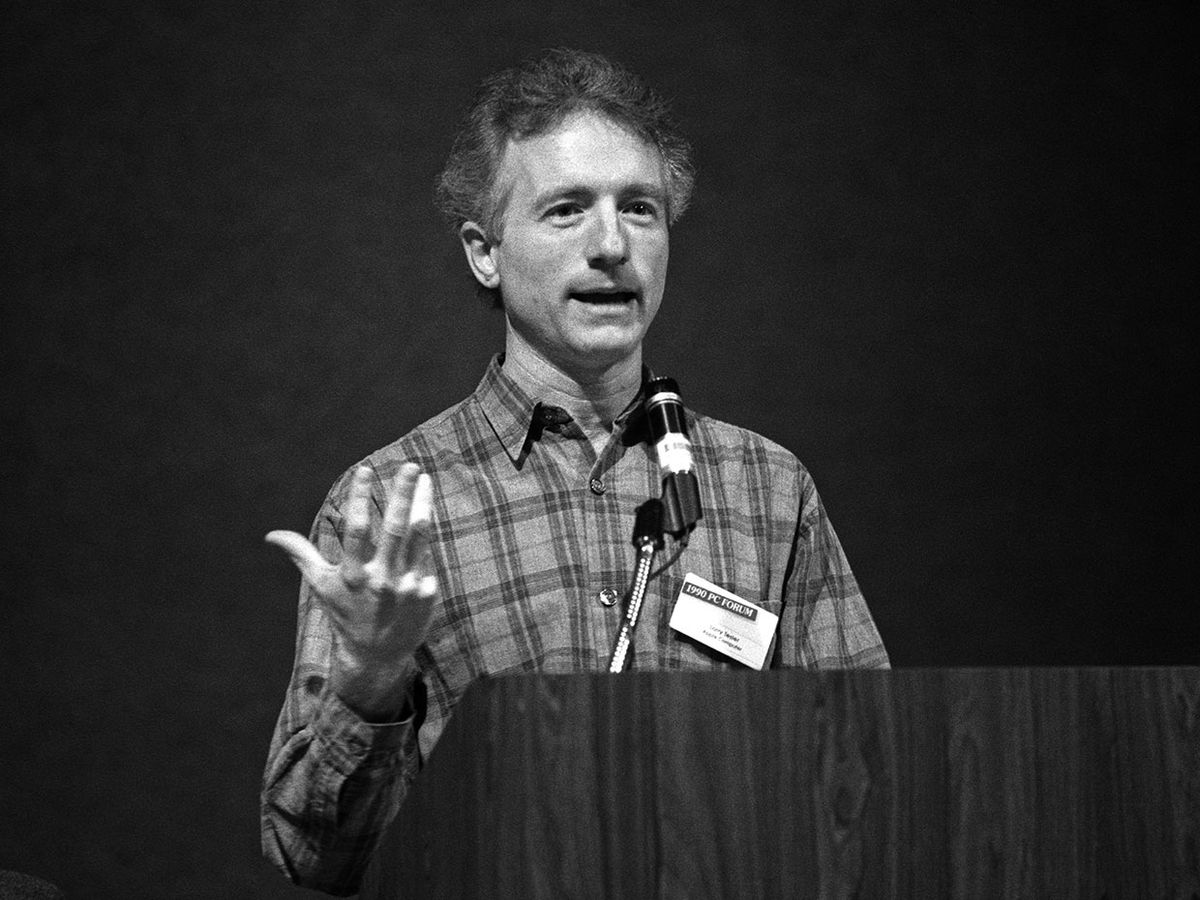Larry Tesler, who died Sunday, February 16, at age 74, is the most famous computer scientist most people have never heard of—and one of the nicest guys I’ve worked with in my years as a tech journalist. I first met him when writing about the amazing things happening at Xerox Parc, when he told me that his groundbreaking work in user interface design started with his determination to prove that the computer mouse was a bad idea.
“I really didn’t believe in it,” he said. “I thought cursor keys were much better. We literally took people off the streets who had never seen a computer. In three or four minutes they were happily editing away using cursor keys. At that point I was going to show them the mouse and prove that they could select text faster than with the cursor keys. Then I was going to show that they didn’t like it.
“It backfired. I would have them spend an hour working with the cursor keys. Then I would teach them about the mouse. They would say, ‘That’s interesting but I don’t think I need it.’ Then they would play with it a bit, and after two minutes they never touched the cursor keys again.”
A researcher to the core, Tesler accepted the results of the experiment—but then set out to make the mouse, then a three-button device accompanied by a five-button keypad, better. He simplified the user interface—bringing us the click-and-drag movement to select text and graphics, along with cut, copy, and paste—and paved the way for the one-button mouse so many of us use today.
Tesler truly revolutionized the way we use computers. So today, when you cut, copy, or paste, take a moment to thank him.
I profiled Tesler, an IEEE member, in detail in 2005, while he was vice president of user experience and design at Yahoo, after he spent nearly two decades at Apple and a few years at Amazon developing that company’s shopping interface.
Here’s how I opened that story:
“Like Woody Allen’s 1983 movie character, Zelig, who appears at every significant historical event of his era, has had a hand in major events making computer history during the past 30 years. When the first document-formatting software was developed at Stanford University in 1971, Tesler was coding it. When a secretary first cut and pasted some text on a computer screen at Xerox Corp.’s Palo Alto Research Center (PARC) in 1973, Tesler was looking over her shoulder. When the first portable computer was turned on in an airport waiting area (and on an airplane), Tesler had his fingers on the keyboard. When Steve Jobs went to PARC in 1979 to see the legendary demo that is purported to have set the stage for a revolution in computing, Tesler had his hand on the mouse.
And when Apple Computer Inc.’s infamous Newton handheld computer failed spectacularly in the early 1990s, taking millions of dollars of investment and a few careers down with it, Tesler was there, too. Hey, nobody gets it right 100 percent of the time.”
You can read the rest of that profile here.
A version of this post appears in the March 2020 print issue as “When You Cut, Copy, or Paste Today, Thank Larry Tesler.”
Tekla S. Perry is a former IEEE Spectrum editor. Based in Palo Alto, Calif., she's been covering the people, companies, and technology that make Silicon Valley a special place for more than 40 years. An IEEE member, she holds a bachelor's degree in journalism from Michigan State University.



